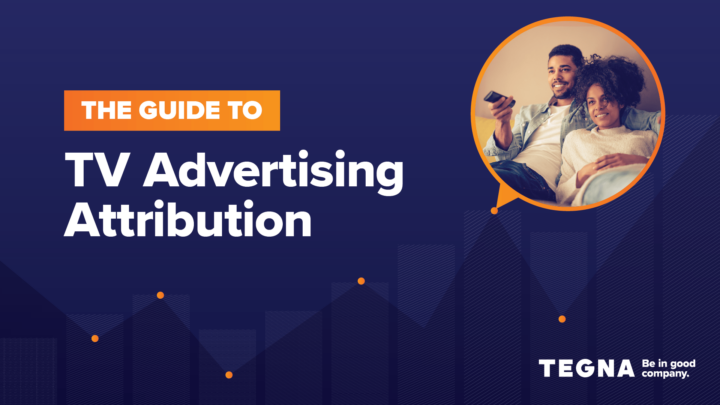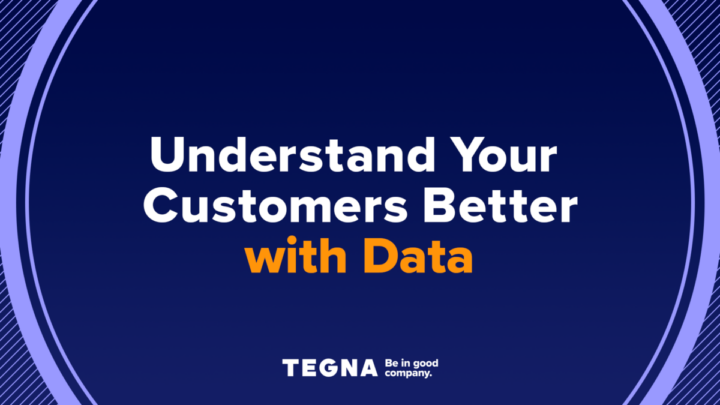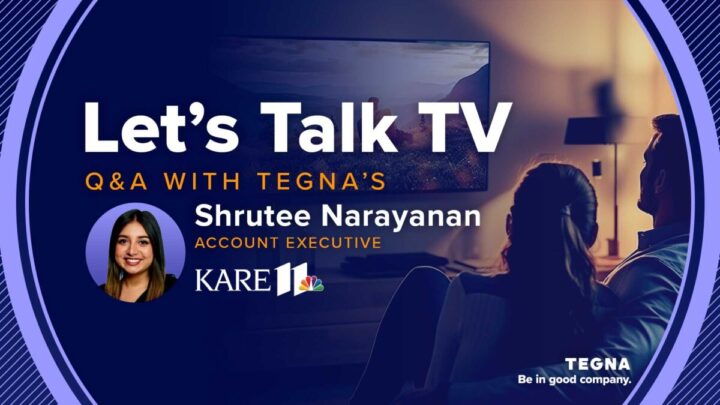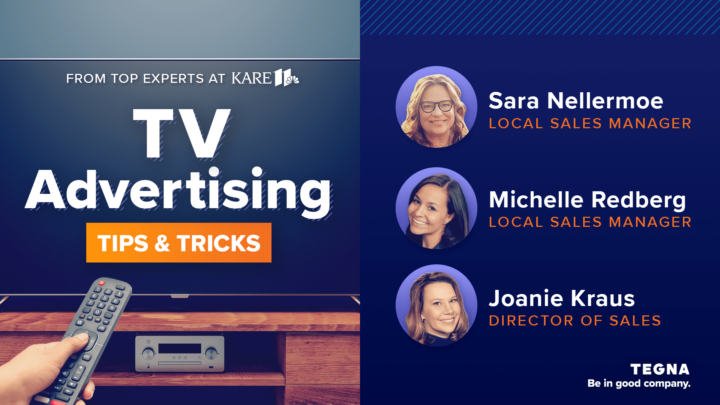TV Media Buying: The Ultimate Guide
Enhance your brand’s marketing strategy with TV media buying. Optimize your campaigns to reach your target audience and drive ROI. Learn more.
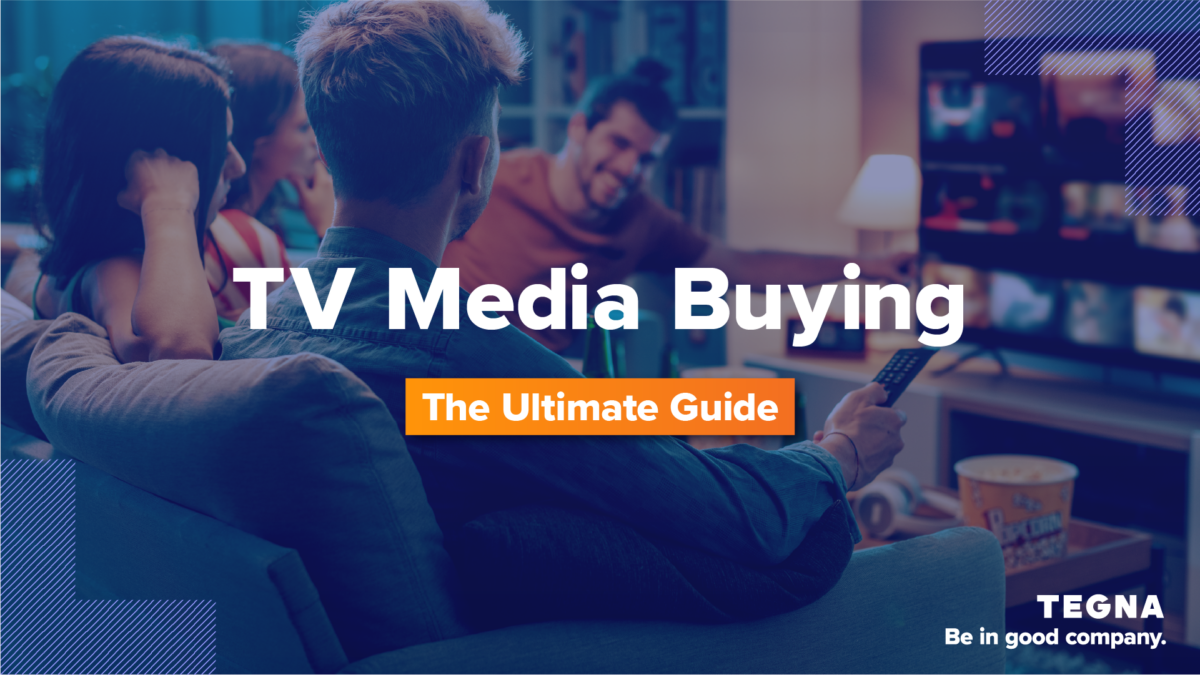
In today’s media landscape, audiences are unprecedentedly diverse in content consumption habits. In fact, eMarketer estimates that 3 in 4 US adults divide their attention among multiple devices when watching video content. They may watch live sports via Linear TV, their favorite shows via streaming, and catch up with the latest headlines on their phones.
With all this variety, television advertising is one of the most effective channels for businesses. From creating brand awareness and establishing trust among a local demographic to driving further action via phone calls, website visits, or even store visits, television advertising is one of the most effective channels for businesses to further their marketing objectives.”
TV advertising is a must-have when creating a media plan. Team TEGNA has put together a guide of tips and tricks to help you during your journey. Let’s explore what TV media buying is, its current state, various advertising formats, advantages, types of buys, the buying process, challenges, examples, and how to get started.
What is TV Media Buying?
Advertising is all about reaching a target audience at the ideal moment and in the right context. To do so effectively, you can’t just throw spaghetti at the wall and see what sticks. To get the most out of your marketing and advertising dollars, you’ll want to take a more strategic approach and create a media plan, which is one of the most critical components of your overall campaign.
In creating a media plan, you’ll outline the who, what, when, where, why, and how your brand intends to reach its target audience. By researching and mapping out these variables, your cohesive plan will help you reach the right audience at the right time, improve the frequency and reach, and maximize your ROI.
Then, if your research shows that TV is where your target audience is, you’ll want to buy TV ad space to promote your brand’s products, services, or ideas. TV media buying then involves selecting the right time slots and channels to maximize a campaign’s reach, impact, and ROI.
TV Media Buying Today
Even with the growth of OTT streaming and digital channels like YouTube, linear TV is still a popular media buy, and a cohesive cross-platform approach is critical to reach potential consumers.
According to Media Radar, more than 12.5K brands spent $59B+ on TV ads, representing a 3% increase in spending and the number of brands investing in TV from 2021. Further breaking this number down, 475 DTC brands spent $5B+ on TV, representing a 5% increase over 2021.
While linear TV is still dominant in advertising, streaming OTT presents new opportunities for brand growth. Media Radar found that 7.3k brands invested $1.7B on OTT ads in 2022.
Meanwhile, our friends at PREMION have found, “Advertisers are leveraging ad-supported OTT to complement linear as an audience reach extension, capturing shifting audiences by engaging with viewers that they would not reach through linear alone. Without CTV and OTT in the mix, advertisers may miss out on a huge local audience segment.”
TV Advertising Formats
Television advertising boasts diverse formats, adapting to the evolving media landscape. With these platforms, advertisers can reach audiences in different ways, ensuring their messages resonate across the spectrum of TV viewership.
- Commercials: Visual mediums, usually 15 to 30 seconds long, that tell a brand’s story and show off its products or services to get viewers to take action.
- Product Placement: Organically integrate your brand’s products into the storyline of a TV show, movie, or other programming. It can be effective in showcasing products to engaged audiences in a contextually relevant way.
- Long-Form Advertising: Appearances on Lifestyle shows, infomercials, and product demonstrations help explain complex products or services in detail and educate audiences.
These formats are most seen on the following platforms:
Broadcast
Broadcast television, accessible over the airwaves (OTA), continues to be a cornerstone of effective TV advertising. Studies show that TV viewers want to watch live content as it happens, specifically news and sports, where Broadcast far outperforms Cable. Local Broadcast channels are also available in 100% of a market’s TV households.
OTT/ Streaming
While viewers turn to broadcast for news, sports, and live events, viewers also turn to streaming platforms for entertainment, which now accounts for 38.7% of all TV viewing. As the icing on the cake, streaming offers advertisers extended and unduplicated reach, advanced targeting capabilities, and a brand-safe and fraud-free environment.
The Advantages of Buying TV Ad Space
Buying TV ad space can offer several advantages for businesses and advertisers. Here are five key benefits:
- Broad Audience Reach: TV reaches a broad and diverse audience on national, regional, and local levels. TV also offers the opportunity to advertise during prime time slots when viewership is at its peak, like during the Super Bowl.
- Brand Awareness: TV commercials can be visually and audibly engaging with creative storytelling to convey the message and brand identity in a memorable way. Paired with repeated exposure to your messaging, TV can create a lasting impression in viewers’ minds.
- Credibility: TV offers a halo effect as many viewers perceive TV ads as more credible and trustworthy than online or other advertising forms. Just ask Roof Fix in San Antonio.
- Targeted Advertising: There are various options for targeting specific demographics or geographic areas when tailoring messages to reach ideal customers.
- Competitive Advantage: By using TV ads, a business can gain a competitive advantage and stand out from competitors who rely solely on digital marketing.
Types of Television Buys
Advertisers have various options and strategies for TV ad campaigns. From remnant ad space to non-preemptible (NPE) and upfronts, let’s find out which approach best suits your advertising goals.
Remnant
Remnant advertising refers to purchasing ad space that is unsold or leftover by the TV network. This ad space typically becomes available closer to the airing date, often at a reduced cost. Remnant ad buys can be attractive for advertisers on a tight budget or for last-minute opportunities to get a message on the air. However, it’s important to note that remnant ad space can be limited in placement and timing, and it may only sometimes align with your target audience or content preferences.
Non-preemptible (NPE)
Non-preemptible ad space is at the opposite end of the spectrum from remnant space. NPE ads are guaranteed placements in premium time slots and programming. These slots are not subject to being bumped or preempted by other ads, making them a reliable choice for advertisers who want to ensure their message reaches a specific audience at a particular time. NPE ads offer high visibility and often come with a premium price tag, but the investment can be worth it for businesses with a strong need for a secure and prominent ad placement.
Upfronts
The upfront advertising model is different from the other two types of buys. It revolves around an annual event called the “upfronts,” during which television networks showcase their upcoming programming to potential advertisers. Advertisers commit to purchasing ad space for the upcoming season during these upfront presentations. The advantages of upfront advertising include access to prime ad slots and integrating your brand with popular shows from the beginning of the season. However, this approach requires advanced planning and a significant budget, which involves a long-term commitment.
The TV Media Buying Process
The TV media buying process involves several steps that advertisers and media agencies follow to purchase advertising time on television networks and channels. This process is designed to help advertisers reach their target audience and achieve their marketing objectives effectively. Here are the key steps involved in the TV media buying process:
Define Campaign Goals
Advertisers must start by clearly defining their advertising goals and objectives. This includes identifying their target audience, determining the desired reach and frequency, and setting specific performance metrics.
Identify Target Audience
Research is essential to understand the target audience and their viewing habits. Advertisers can create persona profiles using demographic, psychographic, and behavioral data to identify the best television channels and programs to reach their audience.
Construct a Media Plan
Creating a media plan is one of the most critical components of your marketing campaign. Media planners work on creating a media plan that outlines the channels, programs, and time slots to be targeted. This plan is based on audience research and budget constraints.
Negotiate Pricing
Media buyers negotiate with TV networks and stations to secure advertising time at the best possible rates. This involves discussions about rates, ad placement, and scheduling. Media buyers aim to get the best value for the budget.
Define Success Metrics
Defining KPIs should be a collaborative effort between the advertiser, media agency, and any relevant stakeholders. Setting clear, measurable, and realistic KPIs specific to the campaign’s goals is essential. Standard success metrics include reach, frequency, Gross Rating Points (GRP), Click-Through Rate (CTR), Conversion Rate, Customer Acquisition Cost (CAC), and Return on Investment (ROI).
Creative Production
Advertisers need to create television advertisements that are engaging, memorable, and relevant to the target audience. This involves scriptwriting, storyboarding, filming, and editing.
Launch Campaign
The ads are delivered to the television networks and stations according to the schedule and plan. Advertisers must ensure that their ads are delivered on time and meet the technical requirements of the broadcasters.
Measure Results & Optimize Campaign
Throughout the campaign, advertisers and media agencies monitor the performance of TV ads. This includes tracking metrics like reach, frequency, ad impressions, and audience engagement. Any necessary adjustments are made based on the performance data.
After the campaign concludes, a thorough analysis is conducted to assess the campaign’s effectiveness. Advertisers evaluate the ROI (Return on Investment) and other key performance indicators to determine if the campaign met its objectives.
The insights gained from the post-campaign analysis are used to inform future TV media buying decisions. This learning process helps advertisers refine their strategies and improve their results in subsequent campaigns.
Challenges of TV Media Buying
TV advertising comes with its fair share of challenges. Advertisers must navigate the costs, the demand for professionally produced commercials, and the evolving media landscape where digital and streaming services are gaining prominence. While TV advertising can be a powerful tool, a well-planned campaign should be used in conjunction with other channels for a comprehensive approach.
Ad Placement and Scheduling
Advertisers must carefully choose when and where to air their commercials to maximize impact. This entails:
- Cost Considerations: Prime time slots during popular shows can be expensive. Advertisers must balance the desire for visibility with budget constraints.
- Competition for Ad Slots: Securing coveted ad slots during high-profile events or popular TV shows can be fiercely competitive. Advertisers must strategize to outbid or outmaneuver competitors.
- Target Audience Alignment: The challenge is to place ads where the target audience is most likely to watch. Understanding viewer demographics and habits is essential for effective ad placement.
Viewership
Understanding viewership trends and challenges is crucial:
- Changing Habits: Advertisers must adapt and diversify their strategies to reach a fragmented audience across linear broadcast, streaming, and digital channels.
- Demographic Variations: Different demographics have varying TV-watching habits. Advertisers must tailor their content and ad placements accordingly.
- Cross-Channel Engagement: The best way to reach a diverse audience is by creating a cross-channel strategy that incorporates linear broadcast and streaming.
Campaign Measurement
Measuring the success of TV advertising campaigns can be complex. Advertisers face several challenges in this regard:
- Attribution Difficulties: It can be challenging to attribute specific results directly to TV ads, given the multi-touch nature of modern consumer journeys.
- Metrics and Data Integration: Integrating TV campaign data with other marketing channels, like digital advertising, is essential for comprehensive campaign measurement. This can be technically demanding.
- ROI Determination: Understanding the return on investment (ROI) of TV advertising requires a thorough analysis of costs and outcomes, making it essential to set clear campaign objectives from the outset.
Moving Forward with Your TV Media Buying Journey
Creating a media plan is one of the most critical components of your marketing campaign, and Team TEGNA is here to help you get the most out of your ad campaigns. Armed with our award-winning portfolio of offerings, our team of marketing experts at the local and national level have driven results for thousands of businesses across the country. With cutting-edge attribution measurement, multiplatform amplification, original content, and the latest in data-driven technology, our mission is to help businesses grow and thrive. Let’s get in touch if you’re ready to place your media with TEGNA.
Frequently Asked Questions
What is the Difference between TV Media Buying and Media Planning?
TV media buying and media planning are two distinct but closely related functions within advertising and marketing. Media planning is the strategic phase that identifies the best media mix to achieve campaign objectives while considering the target audience and budget constraints.TV media buying is the execution phase that focuses on securing and managing advertising placements within the chosen television media channels.
How Much Does TV Media Buying Cost?
Due to the many variables involved, it’s easier to provide a specific cost if you know the details of your campaign. The cost of TV media buying can range from hundreds of dollars per spot in smaller markets to thousands or even millions of dollars for national or international campaigns during prime time slots. Working closely with a media buying agency or media planner is essential to develop a budget that effectively aligns with your campaign objectives and targets your desired audience. They can help you analyze your options and negotiate favorable terms with TV networks to maximize your advertising budget.

